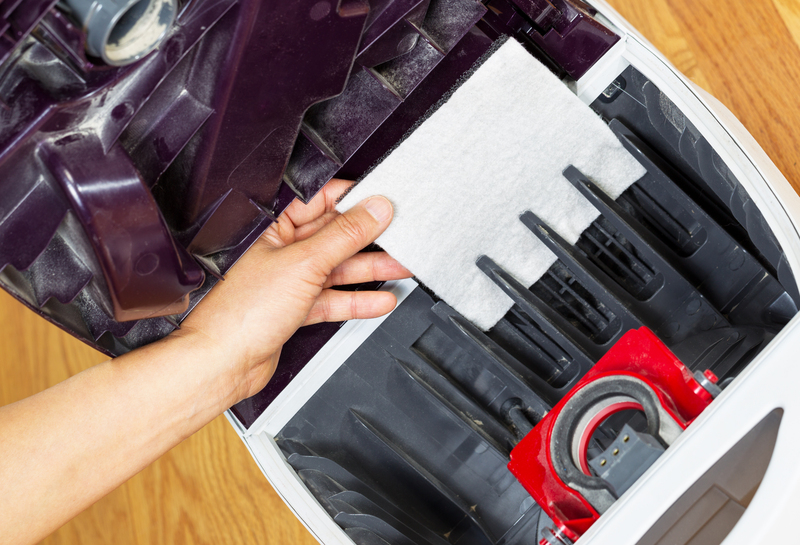Practical Tips to Handle Dust Mites Indoors
Posted on 02/04/2025
Dust mites are microscopic creatures that thrive in warm, humid environments and feed on dead skin cells. These tiny pests are a common cause of allergies and can exacerbate conditions such as asthma. The good news is that there are several practical steps you can take to minimize dust mites and improve indoor air quality. Below are some comprehensive tips to help you handle dust mites indoors.
Understanding Dust Mites
Dust mites are nearly impossible to see with the naked eye, but their presence can be strongly felt. They are most commonly found in bedding, upholstered furniture, and carpets. These tiny arachnids produce allergens that can trigger sneezing, itching, watery eyes, and respiratory issues. An understanding of their habitat and life cycle is essential to effectively control their population.

Invest in Dust Mite-Proof Bedding
One of the primary locations for dust mites is your bed. Given that you spend about a third of your life sleeping, it's crucial to protect this area. Invest in high-quality, dust mite-proof encasements for your pillows, mattresses, and box springs. These encasements are usually made of tightly-woven fabric that prevents dust mites from penetrating and thriving in your bedding.
Clean Bedding Frequently
Even with dust mite-proof encasements, it's essential to maintain cleanliness. Wash your sheets, pillowcases, and blankets at least once a week in hot water (at least 130?F or 54?C) to kill dust mites. If your bedding is not suitable for hot water washing, consider using special anti-allergen detergents that target dust mites.
Control Humidity Levels
Dust mites thrive in humid conditions. Maintaining an indoor relative humidity level below 50% can significantly reduce their population. Use a dehumidifier in areas with high humidity, such as basements and bathrooms. Additionally, ensure good ventilation in your home by using exhaust fans and opening windows when weather permits.
Choose the Right Flooring
Carpets are a haven for dust mites due to their ability to trap allergens. If possible, opt for hard flooring like wood, tile, or linoleum, which are easier to clean and do not harbor dust mites as efficiently as carpets. If replacing carpets is not an option, regularly vacuum using a vacuum cleaner with a HEPA filter to capture and reduce dust mites.
Regular Dusting and Vacuuming
Regular dusting and vacuuming can go a long way in controlling the dust mite population. Use a damp cloth or a microfiber duster to remove dust from surfaces, preventing it from becoming airborne. Always vacuum your home at least once a week, focusing on high-traffic areas, upholstery, and mattresses. As mentioned, a vacuum cleaner with a HEPA filter is highly recommended for maximum efficiency.
Use Allergen-Proof Furniture Covers
In addition to your bedding, upholstered furniture can also harbor dust mites. Consider using allergen-proof covers for sofas and chairs. These covers can be easily removed and washed, creating a barrier between you and any allergens residing in the upholstery.
Declutter Your Space
Dust mites thrive in cluttered environments where dust can accumulate easily. Keep your living space as clutter-free as possible. Store items in plastic containers instead of fabric-covered boxes, and regularly clean areas where clutter tends to accumulate, such as shelves, under beds, and closets.
Consider Air Purifiers
Air purifiers with HEPA filters can help reduce airborne allergens, including dust mites. Place air purifiers in commonly used rooms like bedrooms and living areas. Remember to change the filters as recommended by the manufacturer to maintain effectiveness.
Professional Cleaning Services
Sometimes, DIY efforts may not be enough, especially if you're dealing with a severe dust mite problem. Hiring professional cleaning services that specialize in allergen control can be a worthwhile investment. These professionals use specialized equipment and cleaning solutions to eradicate dust mites more effectively than standard household methods.
Regularly Clean Curtains and Blinds
Curtains and blinds can also collect dust and harbor dust mites. Wash curtains regularly, and consider using washable ones for ease of maintenance. For blinds, use a damp cloth to wipe them down. Alternatively, you can use dusting tools specifically designed for blinds.
Minimize Fabric in Bedrooms
Fabric items like stuffed animals, decorative pillows, and throws can attract dust mites. Minimize such items in your bedroom to reduce the likelihood of dust mites congregating and multiplying. If possible, choose washable items and clean them frequently in hot water.
Avoid Wall-to-Wall Carpeting in Bedrooms
As previously mentioned, carpets are ideal environments for dust mites. Avoid wall-to-wall carpeting in bedrooms if possible. Instead, opt for washable area rugs or no carpets at all to make cleaning easier and more effective.
Maintain HVAC Systems
Your heating, ventilation, and air conditioning (HVAC) system can circulate dust and allergens throughout your home. Regularly replace HVAC filters with high-efficiency models that can trap dust mites. Schedule periodic professional maintenance to ensure your system runs efficiently and does not contribute to indoor allergen levels.
Implementing a Seasonal Cleaning Routine
Seasonal cleaning can complement your regular cleaning efforts. Deep clean your home at the start of each season to remove accumulated dust and allergens. Pay special attention to less frequently cleaned areas like baseboards, ceiling fans, and behind large furniture items.
Choose Hypoallergenic Products
From cleaning supplies to personal care items, choosing hypoallergenic products can make a significant difference in reducing overall allergens in your home. Many of these products are designed to minimize irritants and create a more allergen-free environment.
Educate Family Members
An effective dust mite control strategy involves the entire household. Educate family members about the importance of maintaining cleanliness and reducing allergens. Collective effort can make managing dust mites more achievable and sustainable.

Monitor and Evaluate Your Efforts
Finally, it's essential to monitor and evaluate the effectiveness of your dust mite control measures. Keep track of any changes in allergy symptoms and overall indoor air quality. Adjust your strategies as needed to maintain a comfortable and healthy living environment.
Conclusion
Handling dust mites indoors requires a multifaceted approach that combines regular cleaning, strategic investments in allergen-proof products, and effective day-to-day practices. By implementing the tips outlined above, you can significantly reduce the presence of dust mites in your home, thereby improving the overall air quality and health of your indoor environment.

